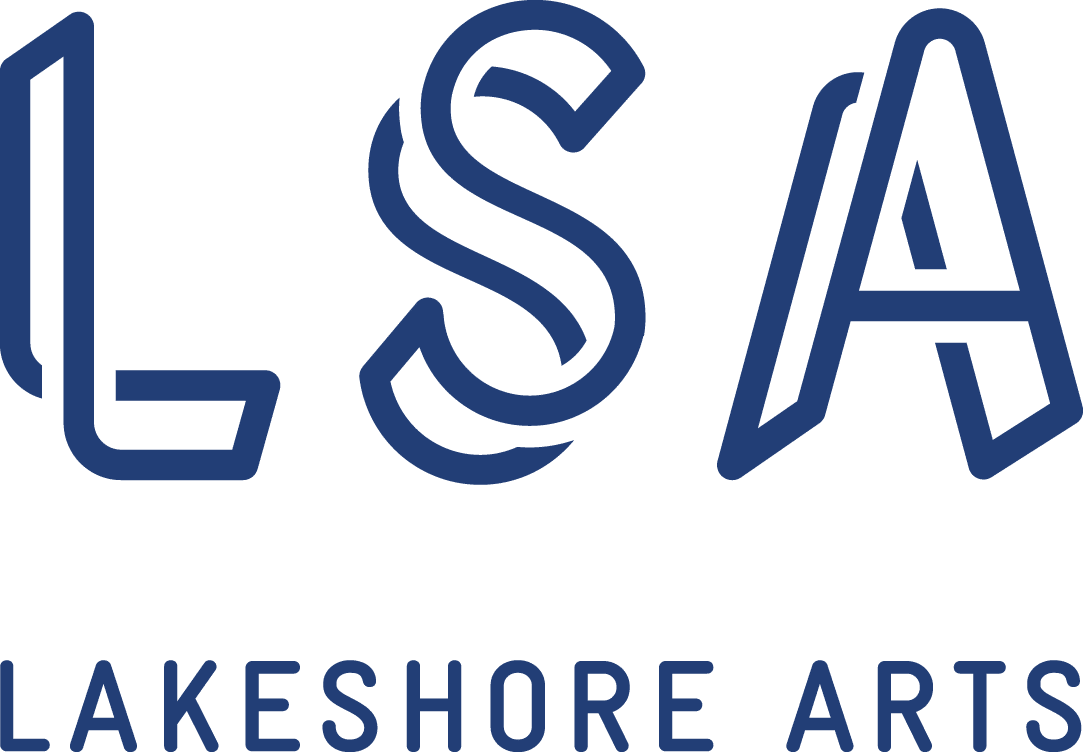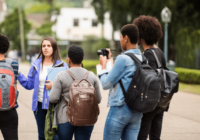
“Representation isn’t true representation unless it can be seen in the piece of media itself, understood by its target audience, and that you don’t need anything outside of it to appreciate it.” – Rowan Ellis.
In the third article for our Pride series, written by Jules Sherwood, we will examine the lack of misrepresentation that queer, BIPOC, and disabled people face in mainstream media.
So let’s talk!
We acknowledge mainstream media doesn’t usually portray characters with these particular marginalized experiences, and there’s a distinct lack of representation for these individuals. Studies have found very little change in the increase of representation of women, LGBTQ+, disabled, and minorities on and off screen from an analysis of 1,300 popular films between 2007 and 2019 (via Annenberg Inclusion Initiative) from the Media, Diversity and Social Change Initiative at the University of Southern California’s Annenberg School for Communication and Journalism.
Within the top 100 movies of 2019, only 34% of speaking characters identified as female. That is not much different from 2018 (33.1%) or 2007 (29.9%). Additionally, only 34.3% were actors of colour. Across the 100 top-grossing films, only 2.3% of speaking characters had a disability and only 1.4% of speaking characters were part of the LGBTQ+ community. Behind the camera, of the 112 directors, only 12 were female. In terms of diversity, 80% of directors were white and only 19.2% of them came from underrepresented groups (via Annenberg Inclusion Initiative).
Speaking more generally of LGBTQ+ representation in the media, thankfully, in 2021, there is much more now than ever before. However, in terms of the quality of representation, it varies greatly. There are some fantastic films, shows, and books out there (see list below). Still, there’s a lot of sub-par stereotyped representation, whether it’s playing into the “bury your gays” trope, playing up the stereotypes of effeminate men and promiscuous bisexuals and much more. The presumption is that in order to be featured at all in media, LGBTQ+ characters must be “palatable” for mainstream (ex: white, cis-gendered, heterosexual) audiences or simply queerbaiting.
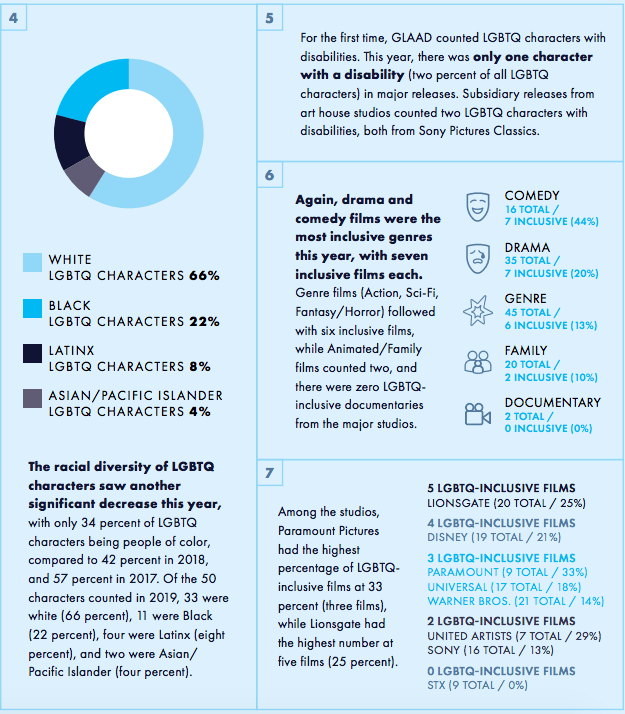
In 2020, GLAAD’s Studio Responsibility Index report revealed the vast underrepresentation of disabled LGBTQ+ characters. For example, only one character accounted for 2% of all LGBTQ+ characters in 2019 films that were part of a major release from the top eight studios.
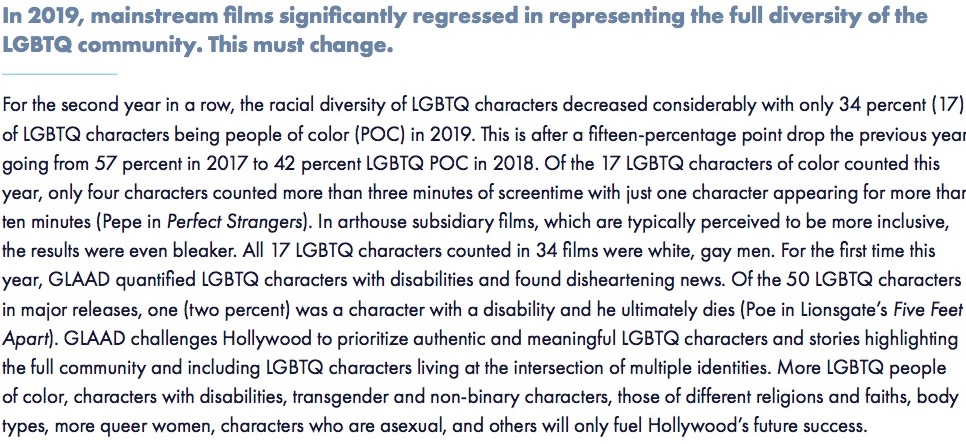
However, representation is a much more complex and nuanced conversation than perhaps you may have thought. There are multiple schools of thinking regarding queer media, all stemming from the question – what is queer media for?
Do you think that the purpose behind queer media is to appeal to the mainstream audience, hopefully increasing awareness and representation? Do you think that queer media should be representative of queer lives and experiences? Do you think that queer media should be for and by queer people to tell their own stories? Or do you not care one way or another? Each of these perspectives has both positive and negative connotations, depending on a multitude of factors.
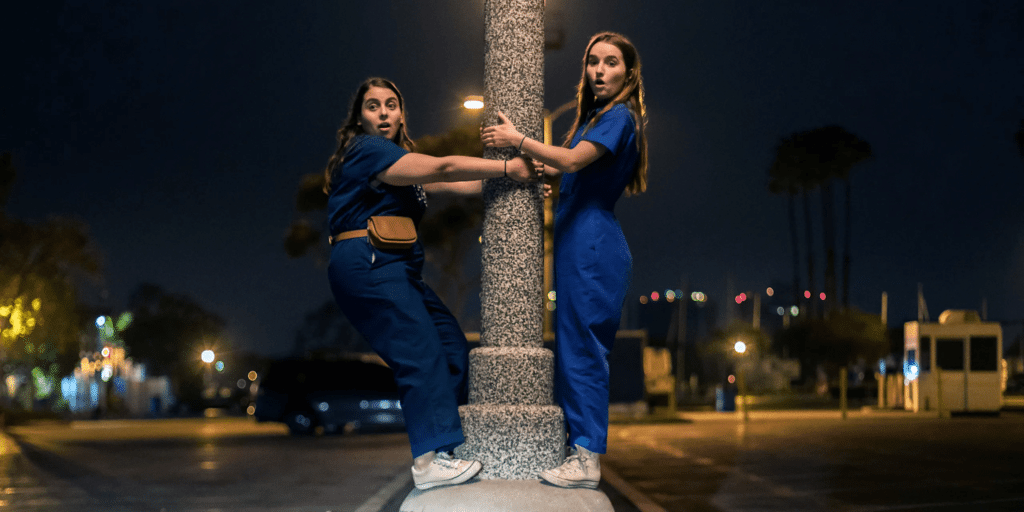
I am very passionate about this topic and could go on at length, but I’ll finish by saying that personally, I believe queer media should be more visible, particularly to queer audiences, but ultimately for everyone, without being made “palatable.” To further this cause and not leave this post on a “doom and gloom,” I have listed below some films, books, and podcasts for you to check out! Remember to check the ratings beforehand and if you’re worried about content, I recommend Does the Dog Die, where you can check for specific content warnings before you watch.
Recommended resources to check-out
List of films & documentaries to add to your next movie night:
- The Way He Looks
- Pride
- Imagine Me and You
- Shelter
- D.E.B.S.
- Handsome Devil
- Book Smart
- Princess Sid
- Boy Meets Girl
- But I’m A Cheerleader
- Rowan Ellis’s video: Comforting LGBTQ+ Movies for Difficult Times
- The Upside
- Crip Camp
- A Crip Camp Love Story
- Euphoria (TV show)
Books to read:
- Disability Visibility: First-Person Stories from the Twenty-First Century by Alice Wong
- Haben: The Deafblind Woman Who Conquered Harvard Law by Haben Girma
- Weekend by Jane Eaton Hamilton
- Six Angry Girls by Adrienne Kisner
- Helen Hoang – Autistic Author (The Kiss Quotient)
- Sharp Zero (webcomic)
- An Unkindness of Ghosts by Rivers Solomon
- The Gentleman’s Guide to Vice and Virtue by Mackenzi Lee
- Chameleon Moon by RoAnna Sylver
- The Black God’s Drums by P. Djèlí Clark
- Stranger by Rachel Manija Brown and Sherwood Smith
- The Stars that Rise at Dawn by Ivana Skye
Podcasts to listen to:
About the writer
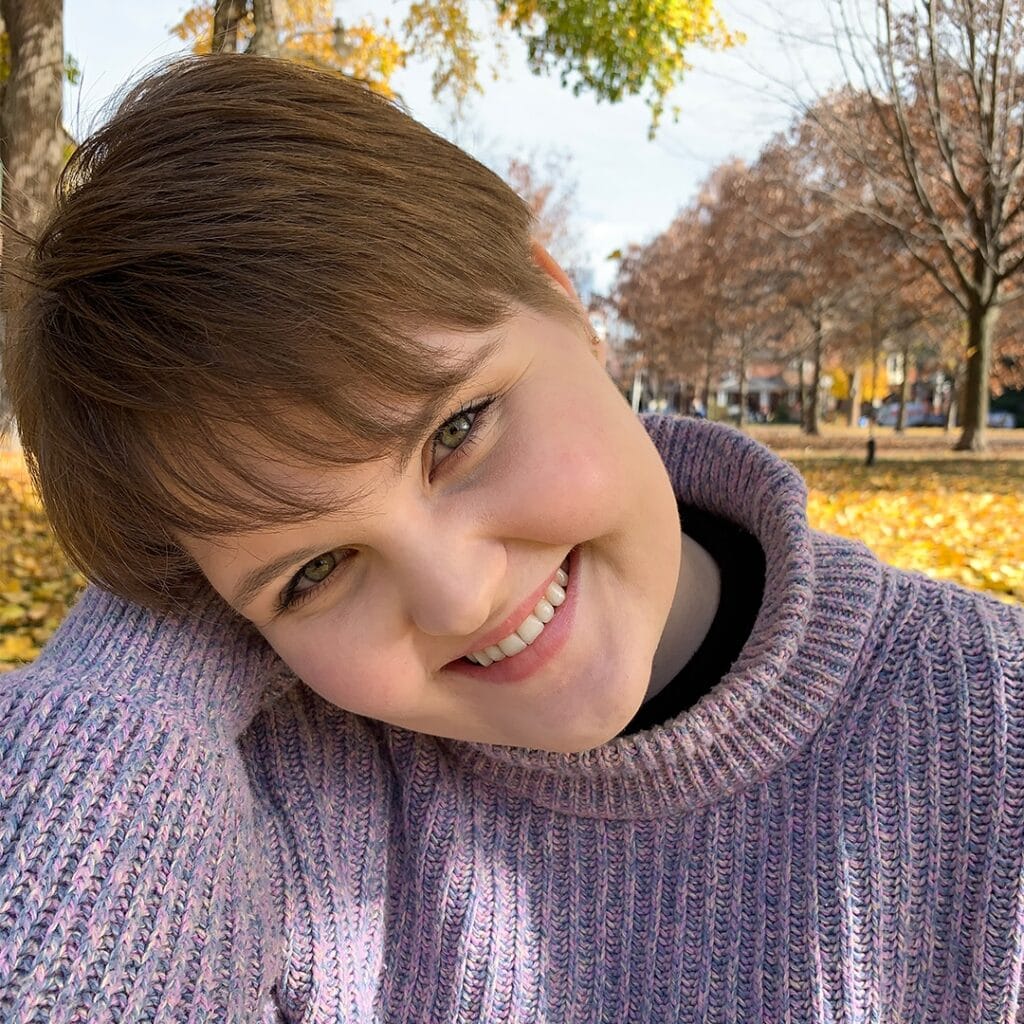
Jules Sherwood is a queer, nonbinary performer, writer, and artist. She will be sharing her thoughts and insights throughout Pride month 2021. Jules is so excited to be working as a writer/researcher for the QSummit Campaign! LGBTQ+ stories and history are very important to her as a member of the community, and she believes they should be more widely visible. When first entering the LGBTQ+ community (and sometimes now), Jules felt overwhelmed by history and culture. She didn’t know where to start or where to look to find more information, even the basics. As a part of this awareness campaign, Jules’ goal is to make this kind of information more accessible AND increase visibility to communities who may feel invisible and misrepresented! You can follow her @jules.m.sherwood.
Edited by Meagan Mabilangan
Article Sources
- https://youtu.be/L2KvWP5_Q9k
- https://youtu.be/0RR4Q09tDoI
- https://mediasmarts.ca/digital-media-literacy/media-issues/diversity-media/queer-representation/queer-representation-film-television
- https://assets.uscannenberg.org/docs/aii-inequality_1300_popular_films_09-08-2020.pdf
- https://www.glaad.org/sri/2020
- https://themighty.com/2020/07/glaad-report-disabled-lgbtq-character-film/
